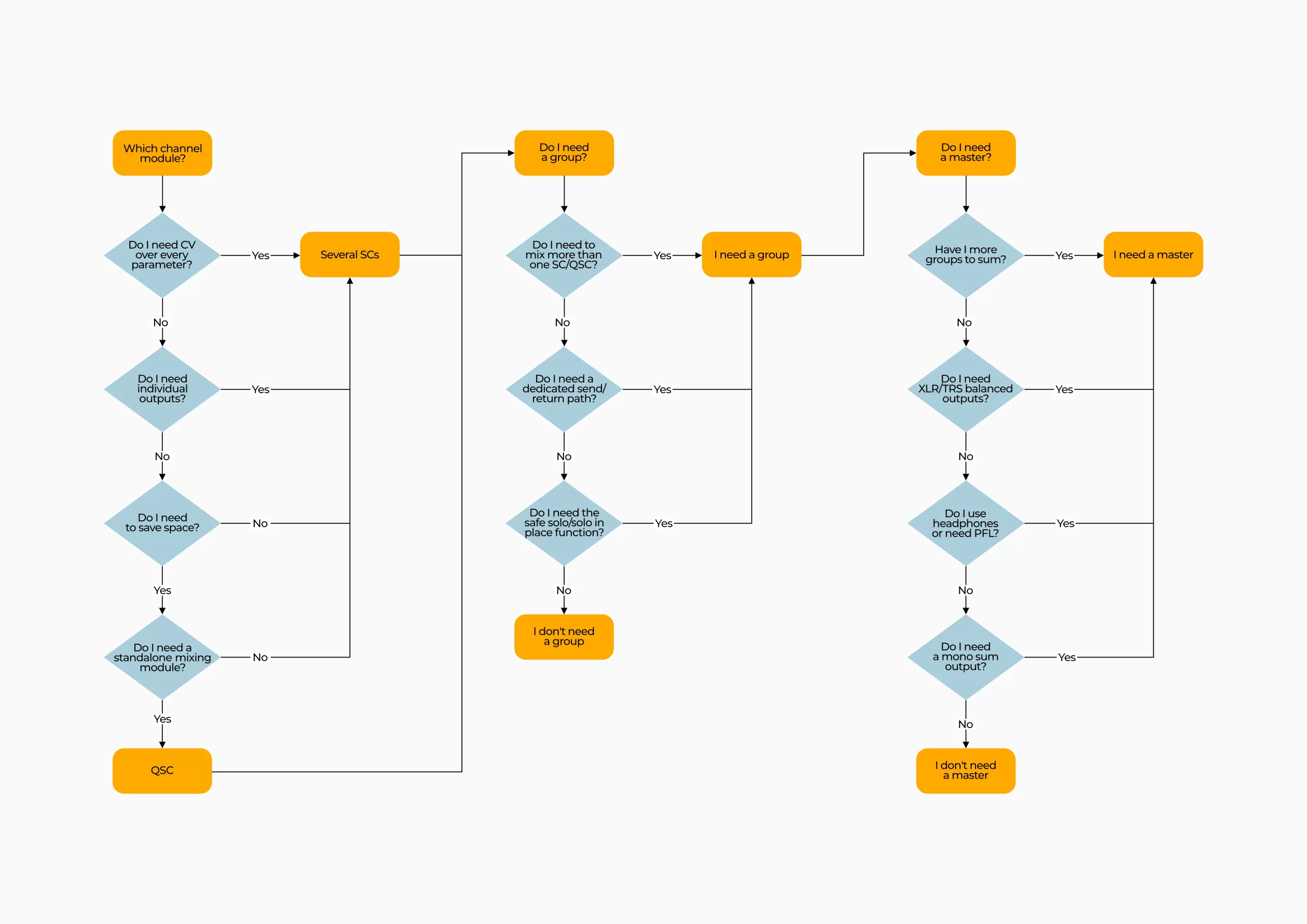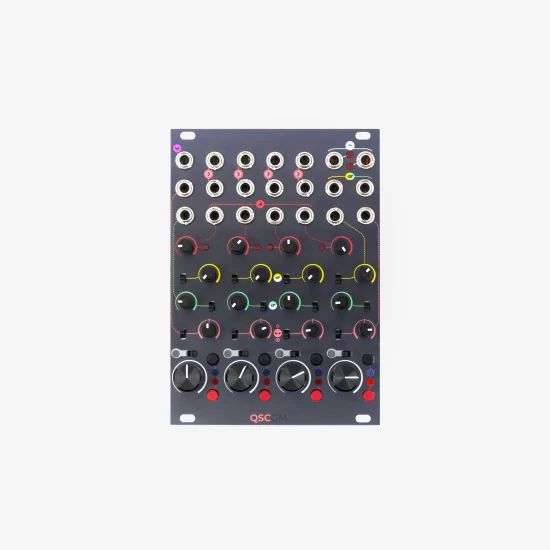
The mixer is a crucial component of a Eurorack modular synthesizer because it is where all sounds must pass to reach the outside world. It can be a bottleneck that may threaten the sound quality of everything that comes before it, and thus a thoughtful Eurorack mixer choice is essential.
We designed the CGM to be an actual Eurorack mixer: with its CV inputs, it can be part of the patch instead of being “outside it.” At the same time, through its pro-audio headroom and sound character, it can mix the sounds with superb clarity.
As you may know, the CGM is a Eurorack modular mixer and can assume different configurations. However, this can sometimes be a drawback because it makes the mixer choice even more difficult.
For this reason, in this blog post, we will discuss how to choose the right CGM mixer configuration for your setup and budget. Assuming you already know how the CGM works, let’s jump straight to the hot questions.
Which channel? SC or QSC?
The CGM mixer has two channel modules as of May 2023: the Stereo Channel and the Quad Stereo Channel. They both can process stereo signals, but they slightly differ in their feature set.
Local outputs
The SC has a stereo output, while the QSC has a local stereo output that provides the sum of the four channels.
If you need individual channel outputs, go with an array of stereo channels; if you need a compact, standalone four-channel mixer, go with the QSC.
CV inputs
The SC has CV inputs for every parameter: VCA, yellow send, green send, and pan. The QSC offers CV over every VCA, but the rest of the controls don’t have CV inputs, except for channel 1 (yellow send and pan) and channel 4 (green send and pan).
If control voltage is a priority, go for the SC. If you have a more static mixing style, with occasional CV automation, go for the QSC.
Footprint and price
Building a four-channel mixer with the SC or QSC will have a different cost and HP size. The QSC already provides a local output and two mono sends in only 18 HP, while four stereo channels require 24 HP plus 6 more of a mandatory group module to mix them together, for a total of 30 HP. The price for this configuration is also higher.
If you’re tight on space or looking for the best channel/space/money value, go for the QSC. If not, go for the SC+group.
Do I really need a group?
The only circumstance where you may not need a group module is if you have a QSC module and you want to use it as a standalone unit. If you plan to build your mixer with SCs or a combination of SCs and QSCs, you need a group as well.
Still, even with a single-QSC setup, there might be some cases in which the group module can add some features.
Solo-in-place and Send/Return
Even if you have a single-channel setup, adding a group will expand its functionalities in two ways.
First, it will add two dedicated stereo returns with VCA and a mono send (the same as the one on your QSC).
Then, it will add the Safe Solo switch, which allows you to take advantage of the Solo-In-Place switches on the QSC and mute/solo several channels simultaneously. Check an example here.
Connect more channels
The most apparent advantage of a group is that it allows you to mix more than one channel module. You can connect up to eight of them, either QSC or SC, and route their signals to its send/return circuit. (Should you connect eight QSCs, you’ll end up with a 32-channel mixer in just 78 HP!)
Use a master
The group module is the only way to connect the channel to a master (it is not possible to connect them directly unless you want to fry your setup). If you are still unsure about the master module, keep reading.
Do I really need a master?
The master modules are the main interface between the CGM and the outside world. As of today, only the Masterone is in production, but you may have found a second-hand Master and you may be considering it. Here are the perks of adding a master.
The PFL function
The master modules can be handy even in a single-group setup to unlock the last channel/group function, the pre-fader listening (PFL). A master has a headphone output and a PFL circuit that allows you to isolate certain channels even with their fader down and monitor them alongside the main sum through a crossfader.
Connect more groups
If you have a large setup with more groups, you’ll need a master module to tie them together. You can connect up to four groups to a master, regardless of how many channels they have.
(Important! You cannot connect one channel to more than one group).
Balanced XLR/TRS outputs
If you need large cables or interface your modular with other equipment, the Masterone provides a pair of TRS pseudo-balanced outputs and another of XLR balanced outputs. Each output pair has a switch to scale the signal to line or mic level.
Mono sum output
The Masterone also has a mono pseudo-balanced sum that you can use for monitoring purposes or less conventional amplification tricks. It has a dedicated knob that can attenuate the main sum by 15 dB or amplify it by 6 dB post-fader.
The bottom line
Choosing the right Eurorack mixer might seem a complex task, but we’ve seen how to break it down into simpler questions so that the whole problem doesn’t get overwhelming. We hope that you found this guide useful, and we also made a brief infographic below (click for a larger image).








